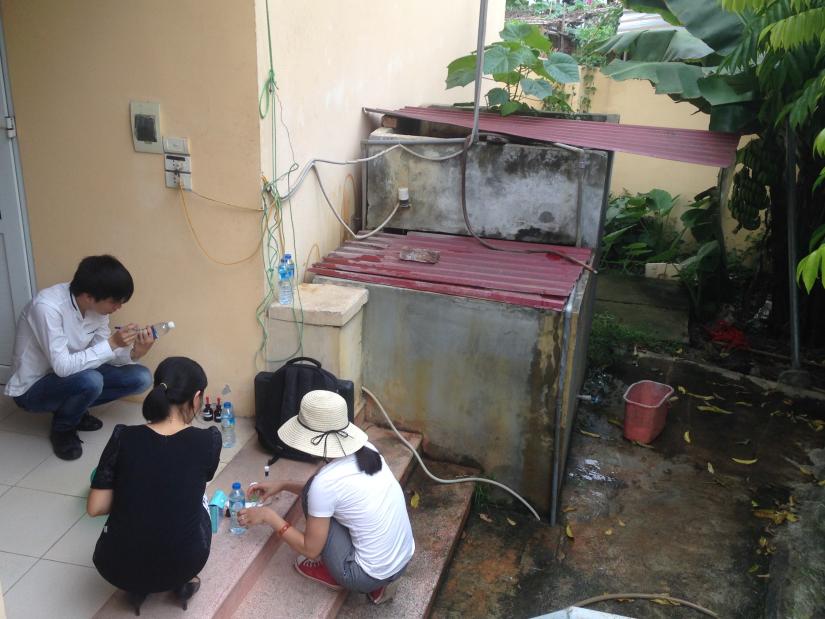Every day, millions of people world-wide are exposed to the slow, painful process of arsenic poisoning

Sampling water quality in Bo Song village.
Reliant on contaminated groundwater, people are often unaware they are being poisoned while they suffer major health problems such as gastrointestinal disorders, muscular weakness, nerve tissue injuries, blackfoot disease, intellectual impairment and cancers.
Hoang Tay commune includes one of the ten ‘cancer villages’ in Vietnam identified as having the most severely polluted water sources, and is where Hai Thi Nguyen of Vietnam’s Institute of Environment Technology will conduct her PhD research.
Hai has joined the UTS award winning DFAT Google Technology Against Poverty team, which was earlier this year recognised by the Department of Foreign Affairs and Trade (DFAT) and Google for its model to eliminate arsenic and provide clean water. Her research will be supervised by team leaders Distinguished Professor Saravanamuth Vigneswaran and Dr Tien Vinh Nguyen of the UTS School of Civil and Environmental Engineering.
Hai has been conducting field studies in the most isolated and poorest village, Bo Song, where @ 1000 people are living in 80 highly impoverished households. They cannot afford to buy in bottled water, and use rainwater while it’s available and groundwater with a very high arsenic concentration (0.31 to 0.4mg/l according to a UTS 2017 Survey) for domestic use, for animals, and for rice and vegetable cultivation, which ends up in the food chain.
“People there are scared, very scared; they are worried about their own health, and about the next generations, and desperate to find a system for safe water,” she said.
The high levels of arsenic concentration in Vietnam may be related to its particular geology, Hai’s undergraduate area of study. There is also speculation that excavation of wells in the Red River delta has contributed to groundwater taint by releasing arsenic from ancient clays.
During the wet season rainwater is stored in tanks, but the villagers rely on groundwater during the ’dry’ which lasts from September – March.
“A local resident has described to me how, during the dry season when the rain tanks finally empty, they use groundwater pumped from tube wells. This has a fishy smell, and a yellow, dark-brown colour, and despite digging several wells, at different depths the water quality does not improve,” said Hai.
From October, working with a local non-government organisation, she will begin a community consultation to extend the initial survey to consider the application of the UTS-designed model. It is based on a filtration system using a membrane, drum and renewable cartridges, which can all be produced, installed, monitored and removed by local businesses. Laboratory testing has occurred throughout 2017, with the first field tests scheduled for January 2018.
“People are constantly asking for water to be tested, they are worried about the quality so we need to educate them about the availability of a simple groundwater filtration why is easy to install and highly efficient and which can help them access a basic need – clean, safe drinking water,” said Hai.
UTS Vietnamese project partners include the Vietnam National University (VNU), and Vietnam Academy of Science and Technology (VAST), which includes the Institute of Environment Technology.

